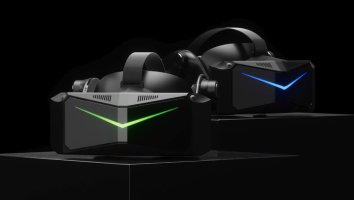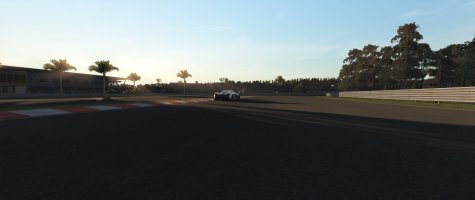You are using an out of date browser. It may not display this or other websites correctly.
You should upgrade or use an alternative browser.
You should upgrade or use an alternative browser.
How to connect Hall sensors to pedals?
- Thread starter APi_Racing
- Start date
-
- Tags
- diy pedals pedals
If you want something that can be directly connected to the arduino without any other circuitry (e.g. amplifier), then you are probably looking at something like this: https://www.digikey.co.uk/product-detail/en/tt-electronics-bi/6127V1A360L.5/987-1389-ND/2620658
They are not cheap
Edit: you will need to power the sensor (+5v / Gnd) and then connect the Vout pin to an A* pin on the arduino so you can analogueRead() from it
Have you considered a load cell for the brake? Since you appear to have taken some time to design and build the pedals, I think you should be able to manufacture something pretty easily. They often come with the HX711 which can be used directly by the arduino e.g. https://www.ebay.co.uk/itm/DIY-Load...epid=0&hash=item4b708a871a:g:XlQAAOSwIaFZNTFf - 1/3 the price of the hall effect sensor too
They are not cheap
Edit: you will need to power the sensor (+5v / Gnd) and then connect the Vout pin to an A* pin on the arduino so you can analogueRead() from it
Have you considered a load cell for the brake? Since you appear to have taken some time to design and build the pedals, I think you should be able to manufacture something pretty easily. They often come with the HX711 which can be used directly by the arduino e.g. https://www.ebay.co.uk/itm/DIY-Load...epid=0&hash=item4b708a871a:g:XlQAAOSwIaFZNTFf - 1/3 the price of the hall effect sensor too
Last edited:
Upvote
0
Found these also: https://uk.farnell.com/honeywell/ss49e/sensor-hall-effect-linear/dp/1225624 - much cheaper. You would need to get the magnets and figure out a suitable way to mount both to get the desired range from the sensor
Upvote
0
maybe something like this for the magnets? https://www.amazon.co.uk/Magnet-Expert®-10mm-thick-Neodymium/dp/B007JTL7G6
Upvote
0
One thing to note about the magnets. Looking at the datasheet, you get the full range of the hall effect sensor if you can move both the north and south poles over the sensor, but those button ones I linked to would only move one pole over the sensor so you would be limited to 1/2 the voltage range. This might not be a huge problem as you can handle it in software, but it might affect the resolution.
Upvote
0
Let us know how you get on. I bought some arduino clones a few weeks ago to mess around with and evaluate (I usually use PIC), so I am interested to see what you get up to!
Upvote
0
Well, I will order magnets and sensors the other day, and as soon as everything arrives, I will collect and share information and photos with you)
Upvote
0
Hey @APi_Racing - I just started looking at replacing my pots with hall effect sensors and remembered your project. How did you get on in the end?
Upvote
0
Just found this thread and I'm going Hall Effect due to pots keep needing cleaning and replacing.Hey @APi_Racing - I just started looking at replacing my pots with hall effect sensors and remembered your project. How did you get on in the end?
I've ordered the sensors and the magnets have already arrived.
Once the sensors are here, I'll be fitting them to my Fanatec CSR Elite Accelerator and Clutch pedals. I should be producing some sort of video to go through the process at the same time too.
Upvote
0
Hi @Alex Townsend Did you have any luck with this?Just found this thread and I'm going Hall Effect due to pots keep needing cleaning and replacing.
I've ordered the sensors and the magnets have already arrived.
Once the sensors are here, I'll be fitting them to my Fanatec CSR Elite Accelerator and Clutch pedals. I should be producing some sort of video to go through the process at the same time too.
Upvote
0
Hola, usando un 1302 o un KY-24 solo obtengo tensiones de 2,5 v a 3,9v aprox, con lo que la resolucion es baja. Alguien pude solucionar esto con softaware o modificando el sketch de arduino? Gracias.
Hello, using a 1302 or a KY-24 I only get voltages from 2.5v to 3.9v approx, so the resolution is low. Could someone solve this with software or by modifying the Arduino sketch? Thanks
Hello, using a 1302 or a KY-24 I only get voltages from 2.5v to 3.9v approx, so the resolution is low. Could someone solve this with software or by modifying the Arduino sketch? Thanks
Upvote
0
That sounds like you are only measuring one pole of the magnet. Do you think you would be able to mount the magnet differently so that the sensor sees both poles as it moves across it? If you can you post some pics people here might have some suggestions.
You could try reducing the reference voltage to the ADC to help a little. I think most arduino have 10bits resolution, so with a reference of 4V you will be around 3.9mV per step which is about 360 steps. My only other suggestion would be to look for one with a 12 bit ADC.
You could try reducing the reference voltage to the ADC to help a little. I think most arduino have 10bits resolution, so with a reference of 4V you will be around 3.9mV per step which is about 360 steps. My only other suggestion would be to look for one with a 12 bit ADC.
Upvote
0
Latest News
-
F1 Manager 2024 Create A Team & Mechanical Failures: Our First ImpressionsThis summer, F1 Manager 2024 sets out to expand upon the previous two games that allowed F1 fans...
- Yannik Haustein
- Updated:
- 6 min read
-
RaceRoom To Add BMW M2 CS Racing, Two More BMWsMore content is heading RaceRoom's way: Three BMWs are coming to the sim in May, the first one...
- Yannik Haustein
- Updated:
- 1 min read
-
Community Question: What Is Your Opinion On Hotlapping?Sim racing offers a plethora of ways to compete, and hotlapping is quite possibly the fastest...
- Yannik Haustein
- Updated:
- 3 min read
-
iRacing Confirms Mustang and Corvette GT3 For 2024 Season 3iRacing have just released their development update blog for May 2024, confirming two...
- Luca Munroe
- Updated:
- 4 min read
-
6 Motorsport Series That Could Make For Great Standalone GamesWith all the licenced titles releasing for many motorsport series, Luca began wondering: which...
- Luca Munroe
- Updated:
- 8 min read
-
Forza Motorsport Update 8 Adds Track Toys, Safety Rating ChangesThe latest patch is here, and Forza Motorsport Update 8 focuses on track toys for new content...
- Yannik Haustein
- Updated:
- 2 min read
-
PISTA Motorsport: First Hands-on ImpressionsFar away from the usual GT3 at Monza or Spa scenario, PISTA Motorsport is in development by REG...
- Yannik Haustein
- Updated:
- 5 min read











